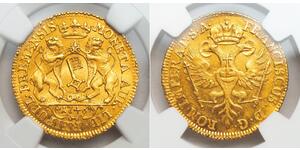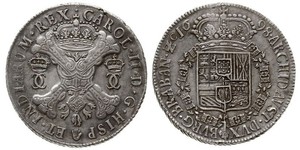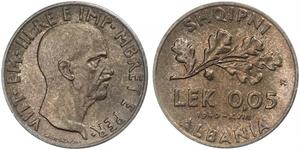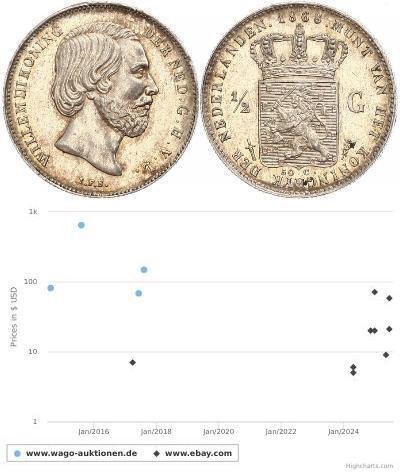(sold for $31725.0)
1830,
PHILIPPINES. 8 Reales, 1830 (Decree of January 16, 1832). PCGS VF-25 Secure Holder.
VERY RARE 1830 Manila Overstrike on a Peru 8 Reales
KM-unlisted host coin (35-37 for type); Basso-39; cf.PNM#6-16; cf.PNM#16-28; Cacho-Type II; Lopez-Chavez Yriarte-Type I. Type IV Manila overstrike, with serrated boarders and reverse legend; dies prepared by Don Benito de los Reyes. Overstruck on an 1828-CUZCOGM Peru 8 Reales. Believed to be UNIQUE having a Cuzco Mint 8 Reales as a host coin. "MANILA" and date fully struck up with only the slightest bit weakness in the last letter, serrated boarder extends the circumference with minor weakness between 8 o'clock and 3 o'clock; Reverse: Crowned arms of Spain fully struck up with portions of the legend from 9 o'clock to 3 o'clock, serrated boarder shows weakness between 3 o'clock and 8 o'clock with remnants of the of serration on the high points. The striking of the 1830 issue was delayed due to frequent breakdowns of the coin stamping machine made by foundry master Benito de los Reyes, who also produced all of the "MANILA" dies. On May 30, 1829 the authorities closed the countermarking office because of these frequent breakdowns and began looking for an alternative. It was recommend that a new stamping press made of tempered steel be ordered from Calcutta or Batavia. After learning that the authorities were looking to purchase a new press, Jose Campana wrote to them on September 18, 1829 offering to sell a similar press that was purchased from Bengal, India for the amount of 5,500 pesos. Before the purchase of this new press could be consummated Campana had agreed to install and test the new machinery by re-stamping no less than 1,000 pesos worth of coins. On January 29, 1830 Campana informed the authorities that the new Bengal press was stored in the warehouse of Don Andreas Camba and ready for testing, but had no dies. He requested that the old dies be modified for the new machine or a new set of dies were produced. Since the old dies could not be modified to fit the new machine, approval was given March 9, 1830 to Benito de los Reyes for the production of new dies. Finally on May 28, 1830 testing of the new press had taken place, but only 400-500 pesos were re-stamped. After inspection and reports of the output production of the new press was given to the authorities, on November 29, 1830 Campana received a counteroffer of 4,000 pesos. He accepted the offer on December 20, 1830. On February 4, 1831 the new press arrived had arrived from Calcutta and was to be installed on a solid base in the same area as the previous press. Installation of the new press began on March 3, 1831, but it wasn't until the reply to the decree of January 7, 1832 on January 16 that approval and re-stamping began. Since the coins were no longer being heated, softened and flattened with a hammer prior to being overstruck, the hardness of the coins effaced the new dies easily and caused the new press to break down within 15 days of operation. Clear host date, assayers letter's, denomination, mintmark and portions of the legend. Overstrike well executed for issue. Attractive light grey toning.
Pedigree: From the Ray Czahor Collection.
type to read more
PHILIPPINES. 8 Reales, 1830 (Decree of January 16, 1832). PCGS VF-25 Secure Holder.
VERY RARE 1830 Manila Overstrike on a Peru 8 Reales
KM-unlisted host coin (35-37 for type); Basso-39; cf.PNM#6-16; cf.PNM#16-28; Cacho-Type II; Lopez-Chavez Yriarte-Type I. Type IV Manila overstrike, with serrated boarders and reverse legend; dies prepared by Don Benito de los Reyes. Overstruck on an 1828-CUZCOGM Peru 8 Reales. Believed to be UNIQUE having a Cuzco Mint 8 Reales as a host coin. "MANILA" and date fully struck up with only the slightest bit weakness in the last letter, serrated boarder extends the circumference with minor weakness between 8 o'clock and 3 o'clock; Reverse: Crowned arms of Spain fully struck up with portions of the legend from 9 o'clock to 3 o'clock, serrated boarder shows weakness between 3 o'clock and 8 o'clock with remnants of the of serration on the high points. The striking of the 1830 issue was delayed due to frequent breakdowns of the coin stamping machine made by foundry master Benito de los Reyes, who also produced all of the "MANILA" dies. On May 30, 1829 the authorities closed the countermarking office because of these frequent breakdowns and began looking for an alternative. It was recommend that a new stamping press made of tempered steel be ordered from Calcutta or Batavia. After learning that the authorities were looking to purchase a new press, Jose Campana wrote to them on September 18, 1829 offering to sell a similar press that was purchased from Bengal, India for the amount of 5,500 pesos. Before the purchase of this new press could be consummated Campana had agreed to install and test the new machinery by re-stamping no less than 1,000 pesos worth of coins. On January 29, 1830 Campana informed the authorities that the new Bengal press was stored in the warehouse of Don Andreas Camba and ready for testing, but had no dies. He requested that the old dies be modified for the new machine or a new set of dies were produced. Since the old dies could not be modified to fit the new machine, approval was given March 9, 1830 to Benito de los Reyes for the production of new dies. Finally on May 28, 1830 testing of the new press had taken place, but only 400-500 pesos were re-stamped. After inspection and reports of the output production of the new press was given to the authorities, on November 29, 1830 Campana received a counteroffer of 4,000 pesos. He accepted the offer on December 20, 1830. On February 4, 1831 the new press arrived had arrived from Calcutta and was to be installed on a solid base in the same area as the previous press. Installation of the new press began on March 3, 1831, but it wasn't until the reply to the decree of January 7, 1832 on January 16 that approval and re-stamping began. Since the coins were no longer being heated, softened and flattened with a hammer prior to being overstruck, the hardness of the coins effaced the new dies easily and caused the new press to break down within 15 days of operation. Clear host date, assayers letter's, denomination, mintmark and portions of the legend. Overstrike well executed for issue. Attractive light grey toning.
Pedigree: From the Ray Czahor Collection.
Price
Similar Coin Groups
2025-05-23
- Historical Coin Prices
2025-05-29
- Historical Coin Prices
You may be interested in ...




















